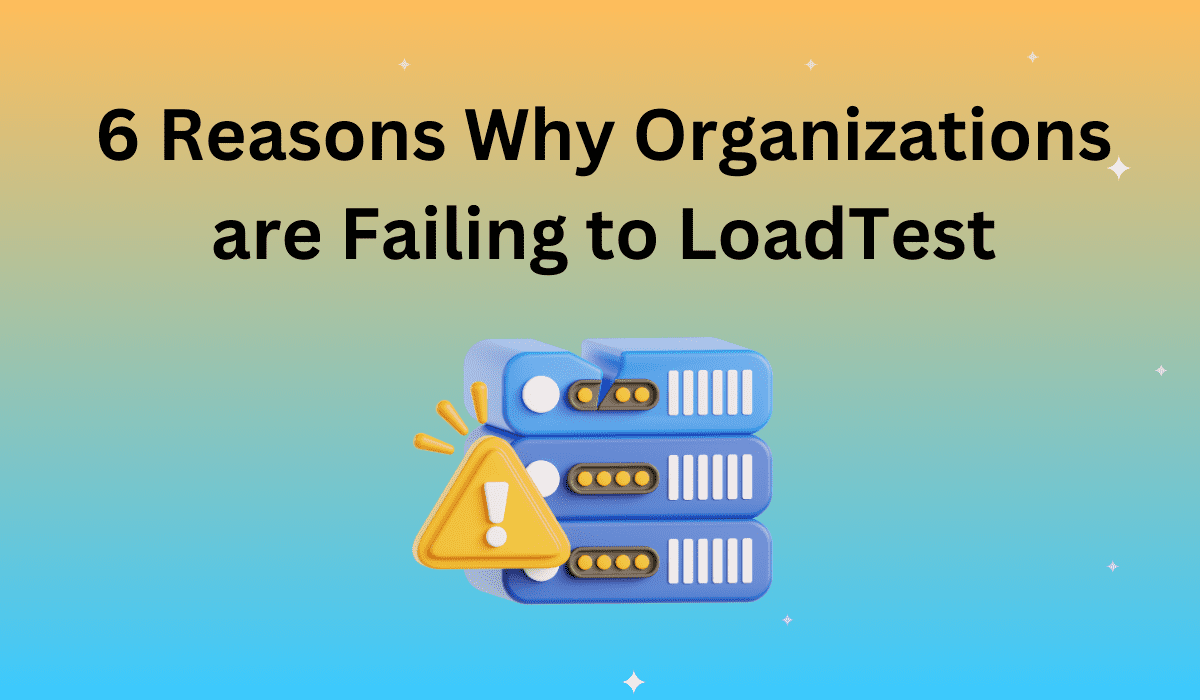Load testing is an essential practice for any organization looking to keep its online platforms running as smoothly as possible. Load testing creates virtual users and runs them against an actual website or application to determine how well it performs under various traffic levels. This information can be used to identify efficiency problems within the platform, as well as gauge how to optimize infrastructure to meet traffic growth and spikes.
Load Times Are Important
As far as your website’s visitors are concerned, load testing equates to faster load times and fewer loading fails. On the e-commerce side, load testing is important because higher conversion rates directly correlate to faster load times. Even if an organization’s site isn’t selling something, faster load times result in less website abandonment for competitor platforms.
But not every organization has embraced load testing as a preemptive performance improvement strategy. Here are six reasons why:
Awareness. Many organizations simply aren’t aware load testing exists. They may look at data from Google Analytics, server performance applications, and internal website reporting thinking this is where performance analysis ends. Load testing provides extensive information on infrastructure sustainability and performance potential for websites, mobile applications, and cloud services.
Complacency. Other organizations aren’t load testing because they already believe they’re doing enough. Their platform is likely holding up well outside of a few hiccups, and they haven’t experienced any major problems. Taking the “if it ain’t broke, don’t fix it” approach is usually wise when dealing with software and hardware, but that doesn’t mean an organization should avoid looking at what the future might hold.
Focusing on Sustainability, Not Growth Potential. Load testing lets an organization know how well their platforms will perform in the future alongside user-base growth. Some of the most important information pertaining to traffic growth preparedness comes from load testing stress and peak tests. This information teaches an organization how to scale its infrastructure to efficiently manage traffic increases. Being unable to manage traffic growth and spikes means an organization could miss out on both conversions and visits that come with popularity growth. Don’t put a limit on success.
Avoiding It Until There’s a Problem. The “everything’s fine until it’s not” problem also prevents many organizations from load testing. But it’s dangerous to buy into the idea that if the platform has held up under existing maximum traffic loads, the platform will always perform well. Such organizations often gravitate towards load testing after their platform experiences a major dip in performance, or even a complete failure, when something explodes with popularity. It’s important for every company to capitalize on popularity growth immediately–so if the platform fails, the damage is already done.
Fear of Load Testing Being Overwhelming. Some organizations look at load testing and believe learning how to implement and utilize it will be overwhelmingly challenging. While it’s not always easy to get the project running, full-service load testing is available to make the process as easy as possible. Self-service solutions are also available for organizations that feel more confident about load testing.
Cost. Organizations tend to be reserved about paying for more services. However, load testing can save money in the long run on infrastructure costs in addition to improving conversion rates through optimized performance. The bottom line: Load testing is an investment. Organizations that are unsure of the benefits can even take advantage of free low-volume load testing services to test the waters.
If your organization hasn’t started using load testing to improve its online platform performance, contact the experts at Apica today and find out how we can help.
Facebook Photo Credit: www.alaindelorme.com/?p=works











